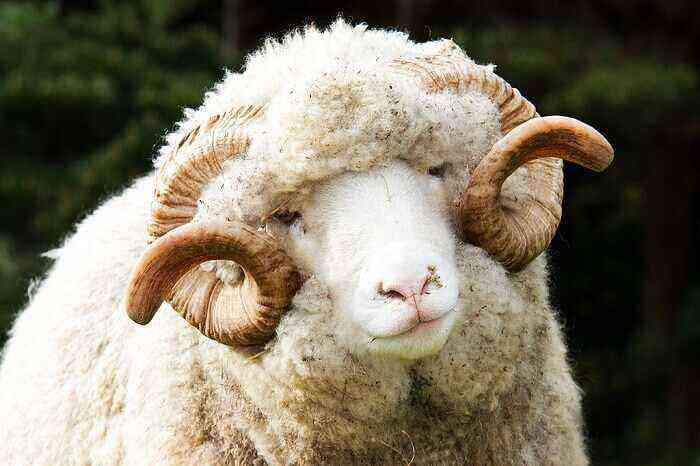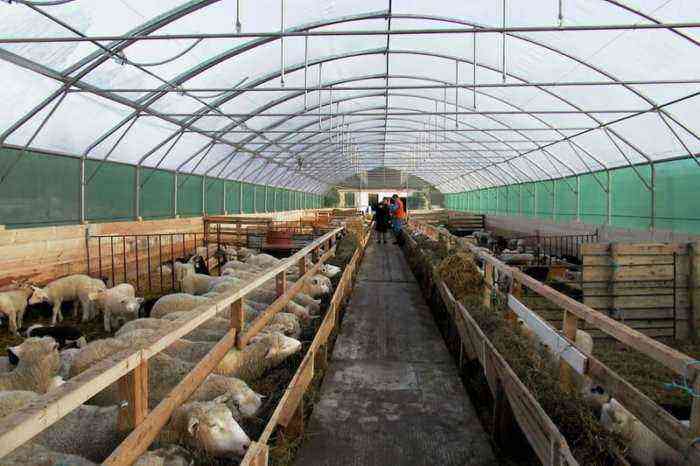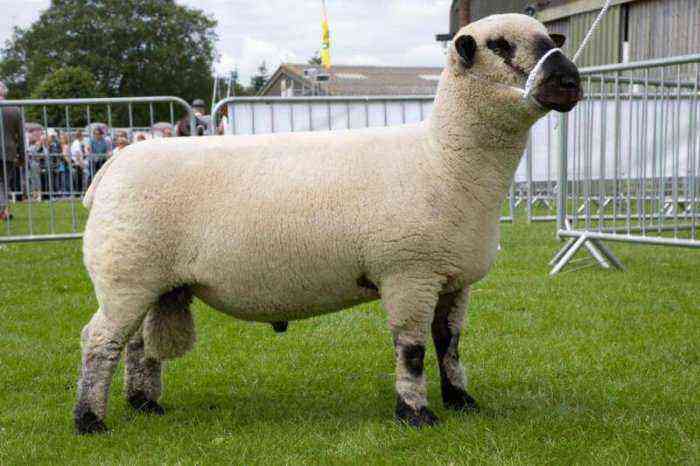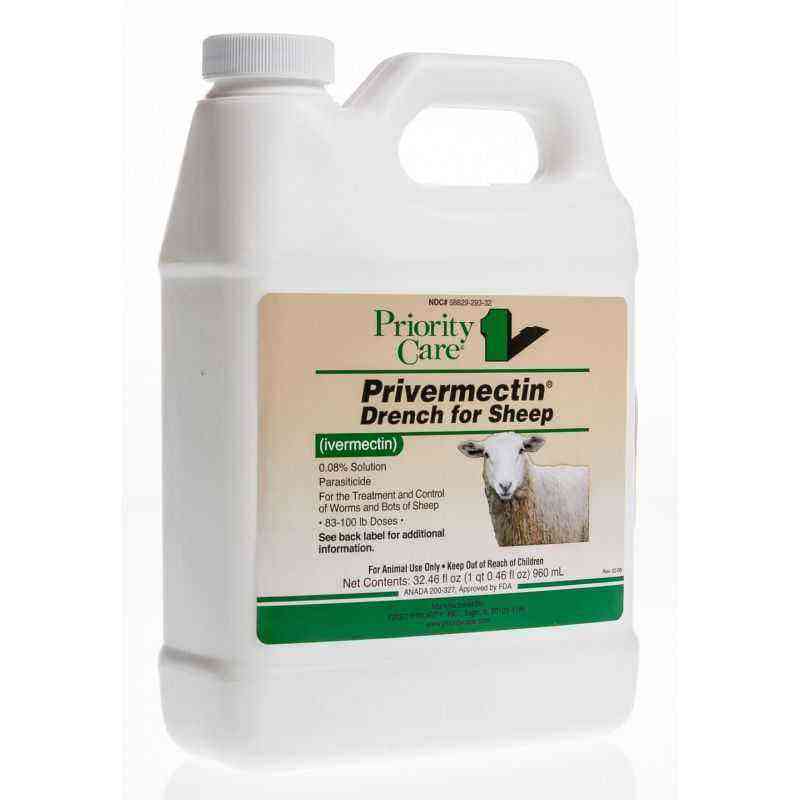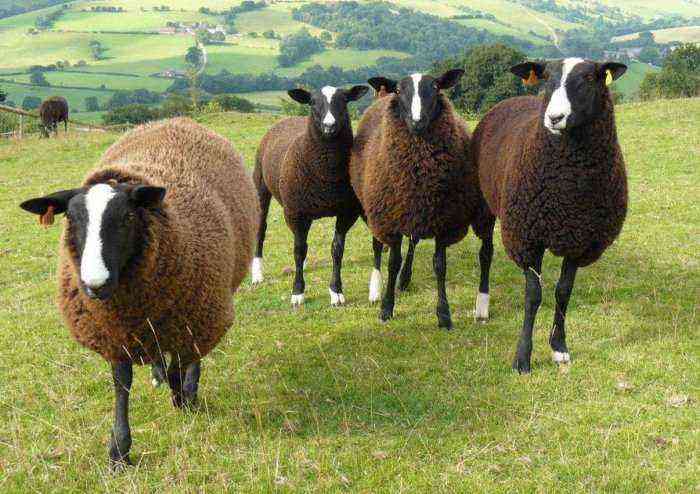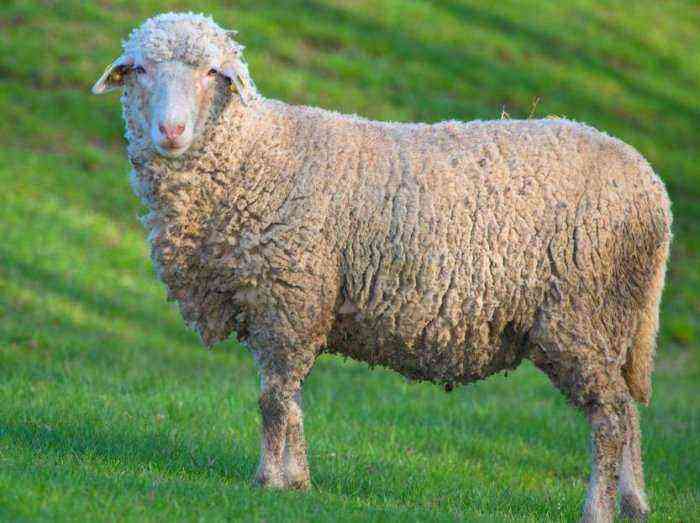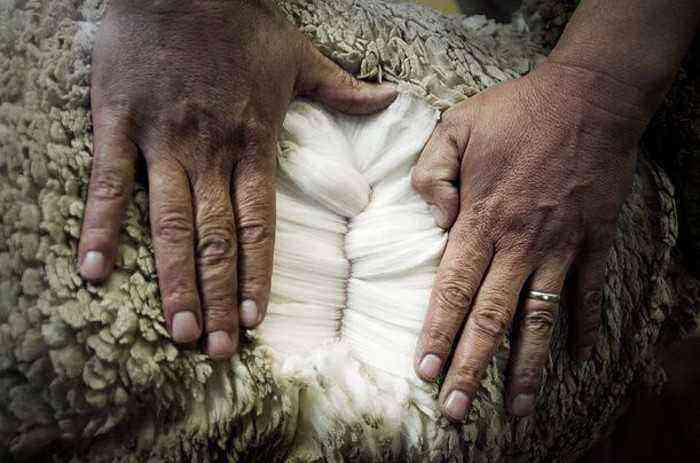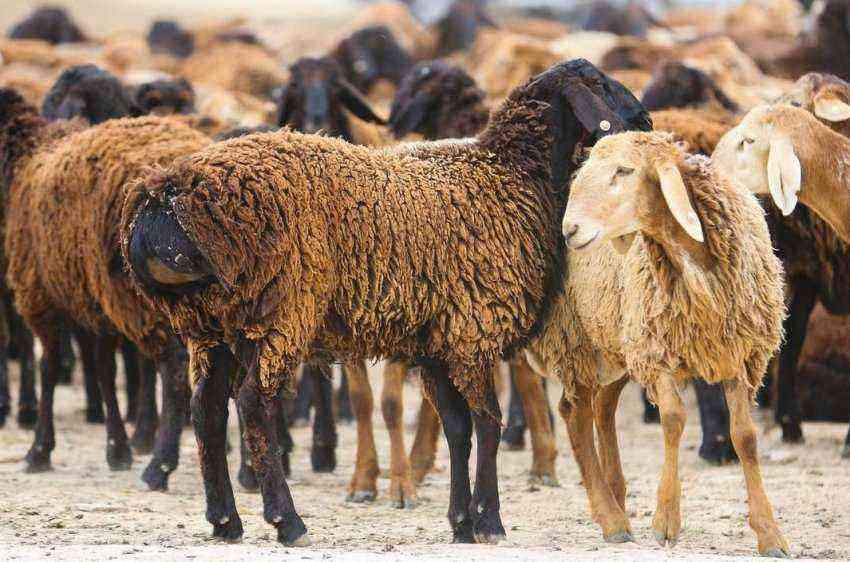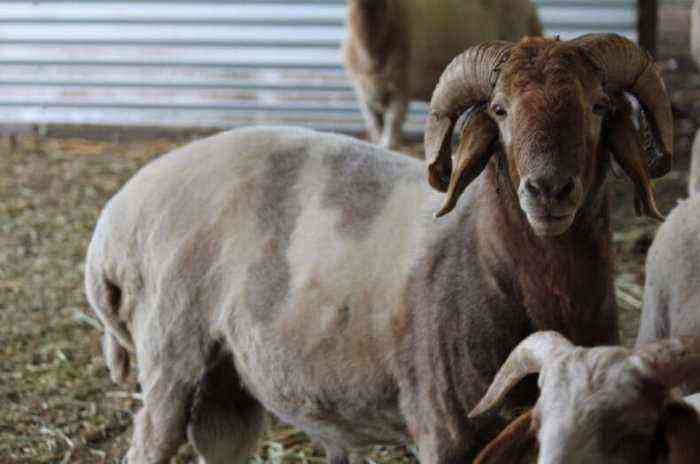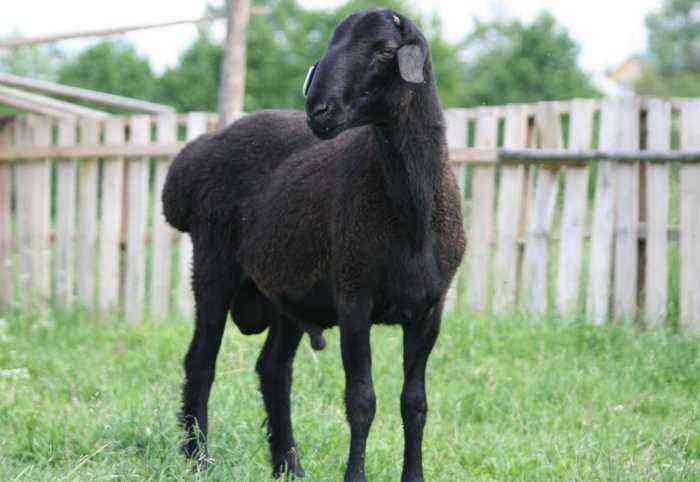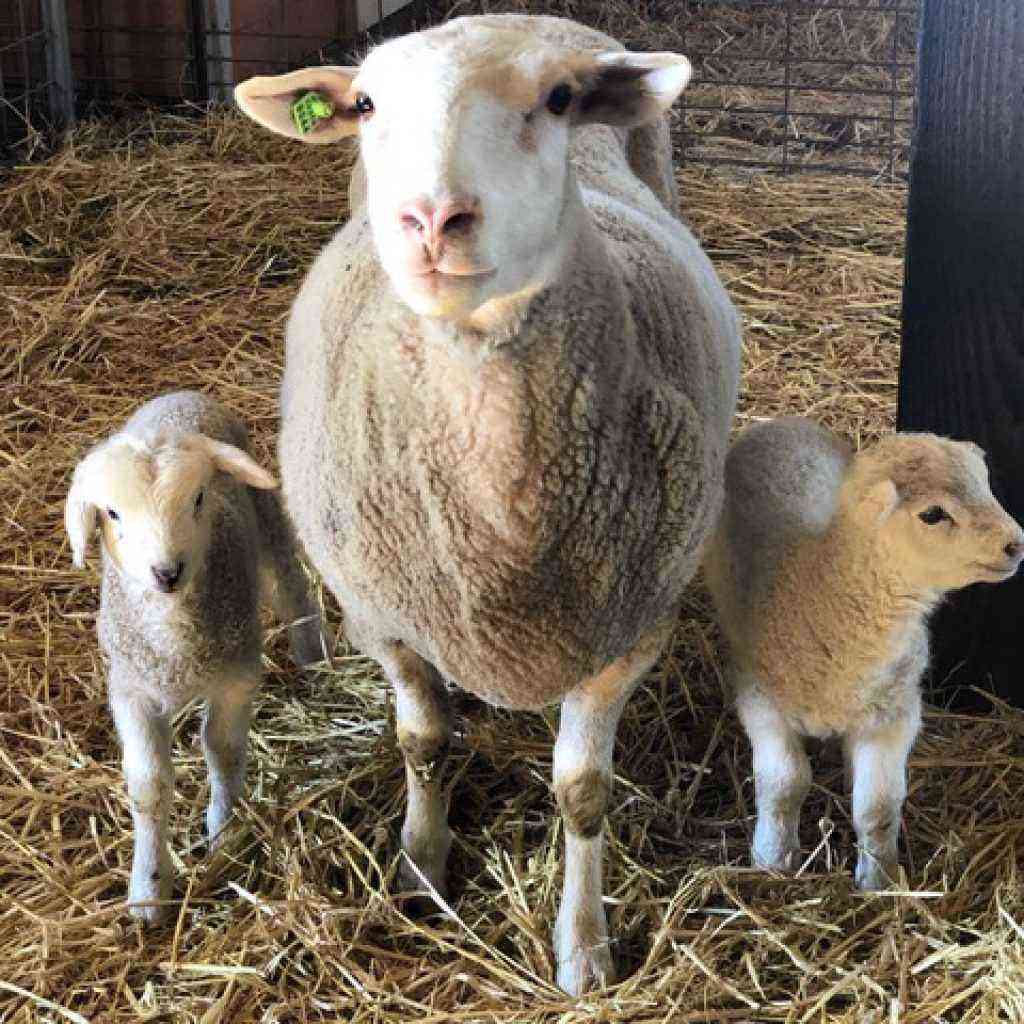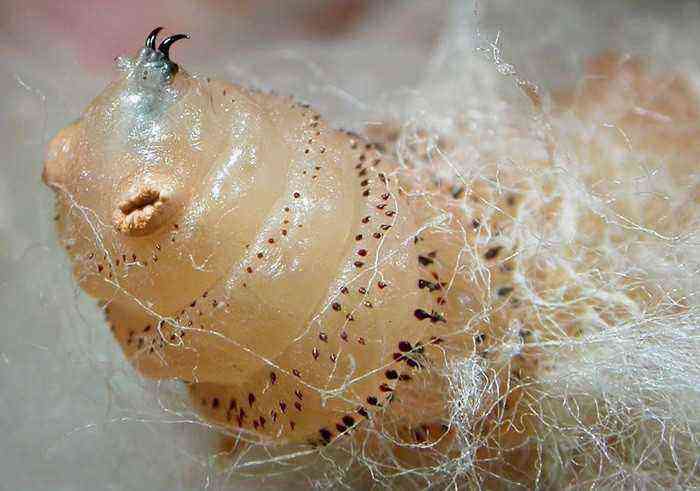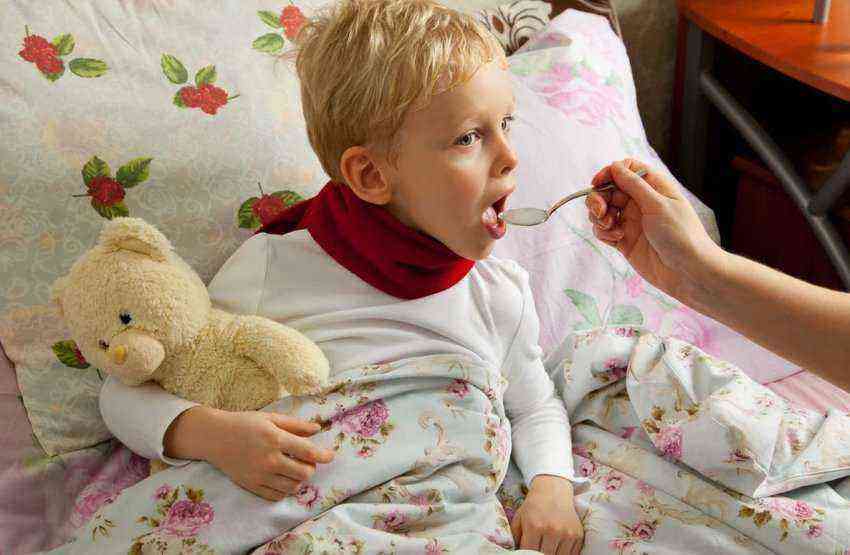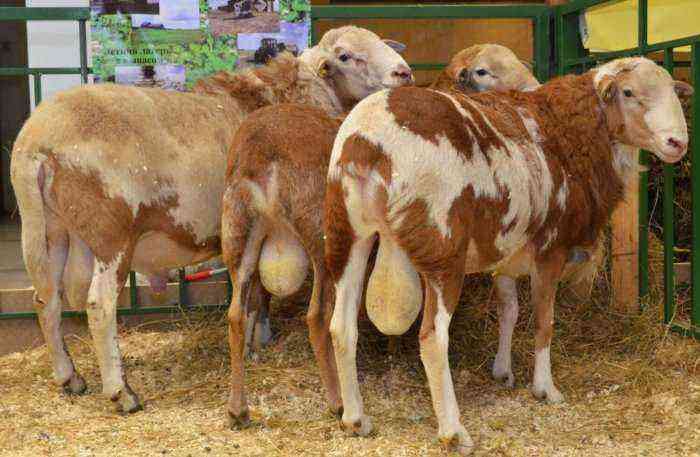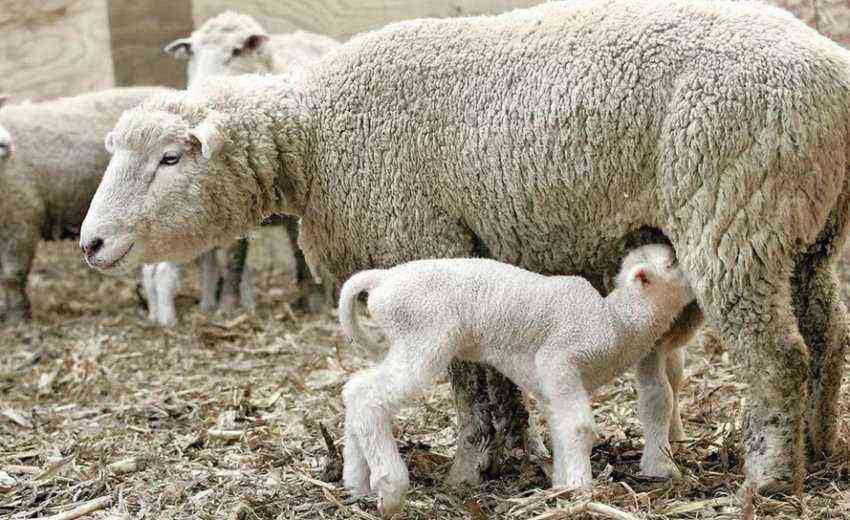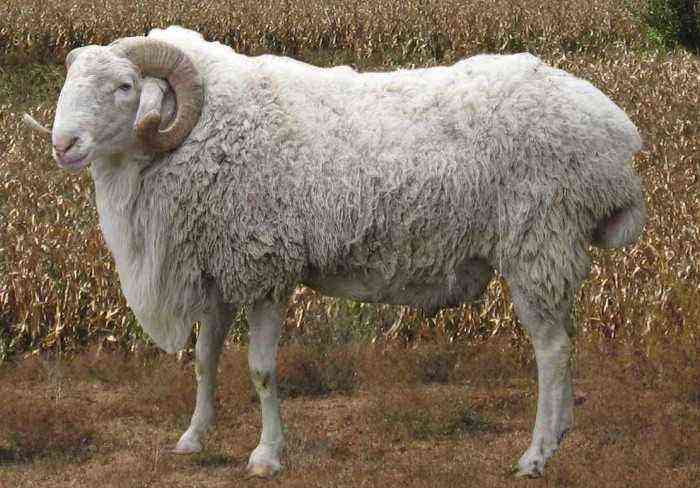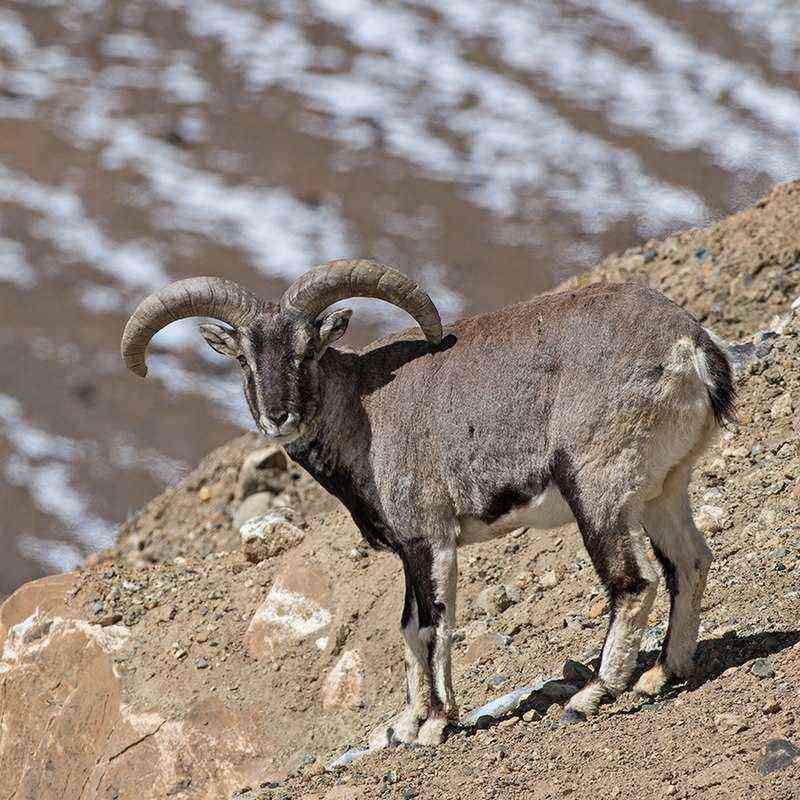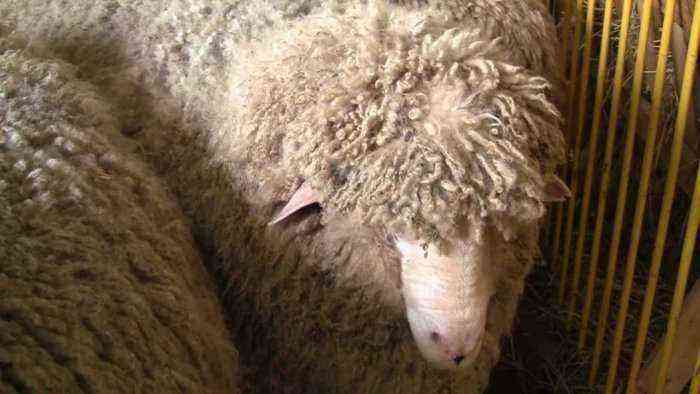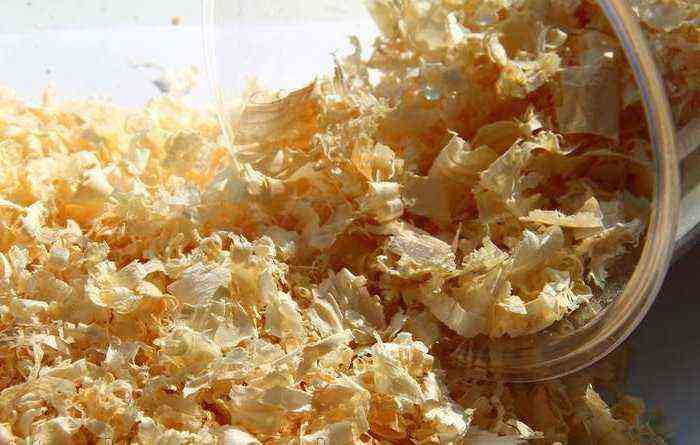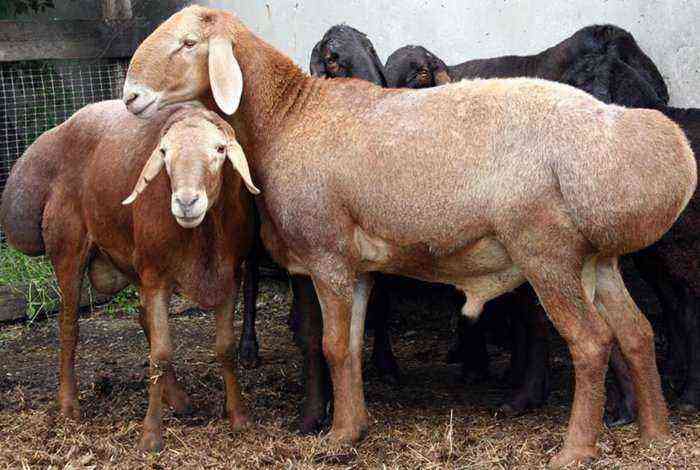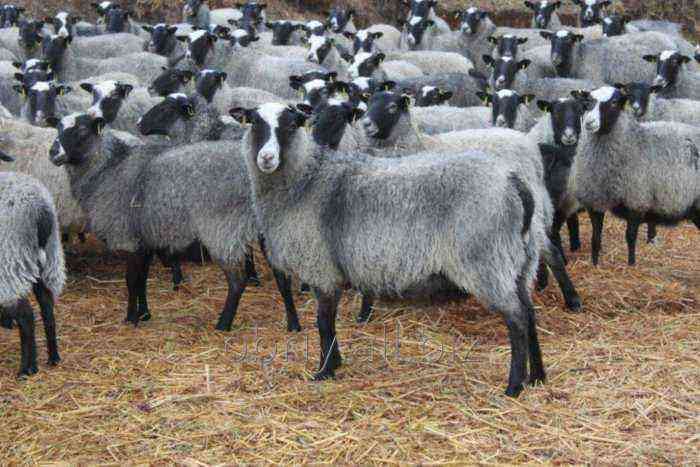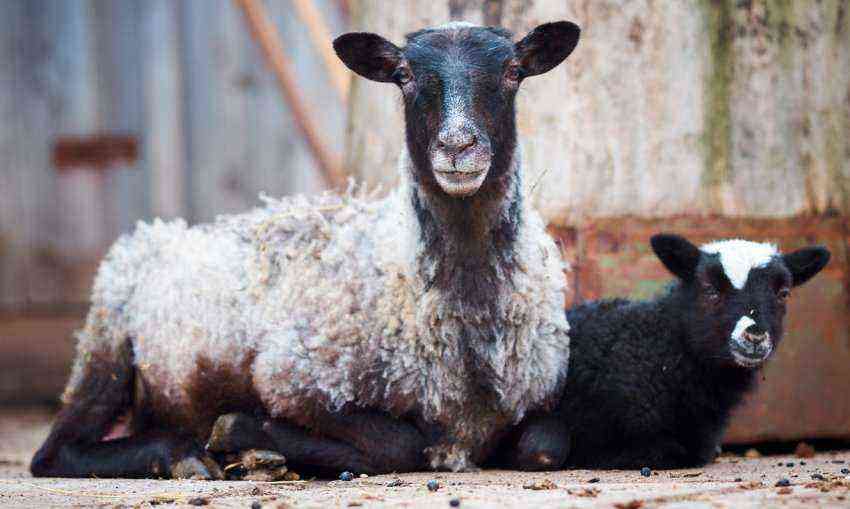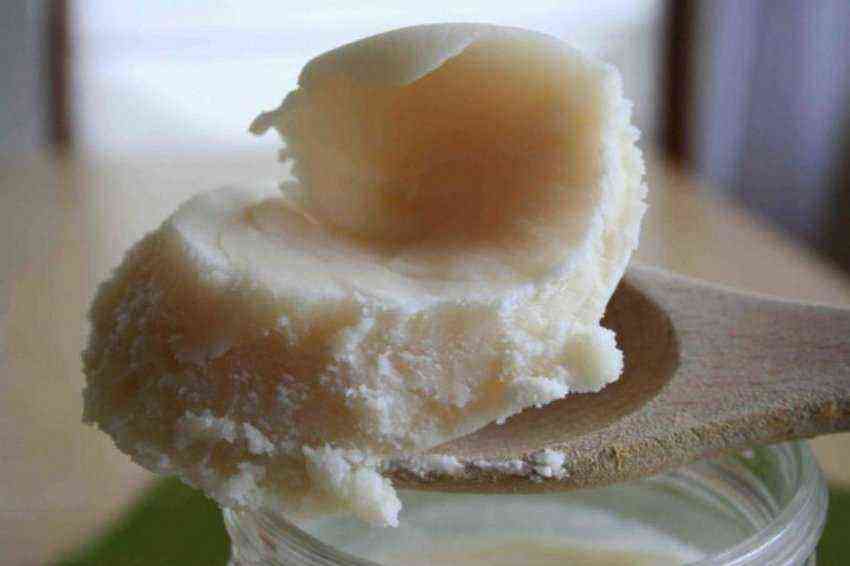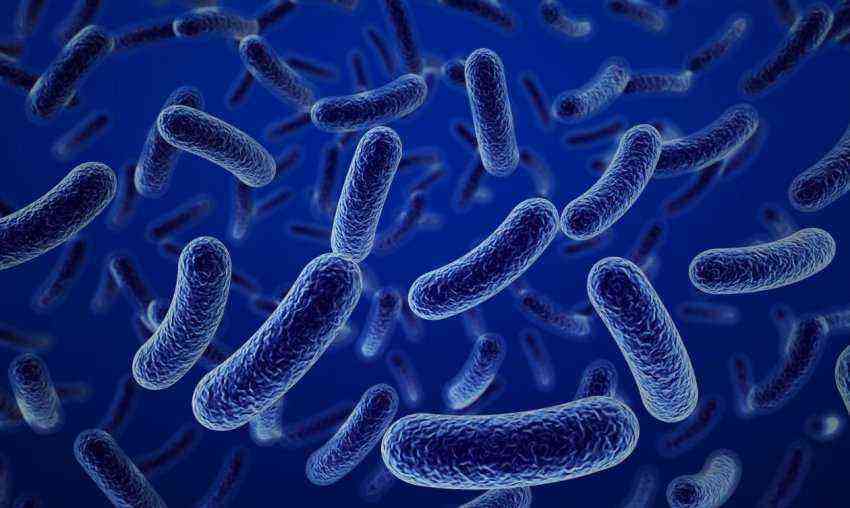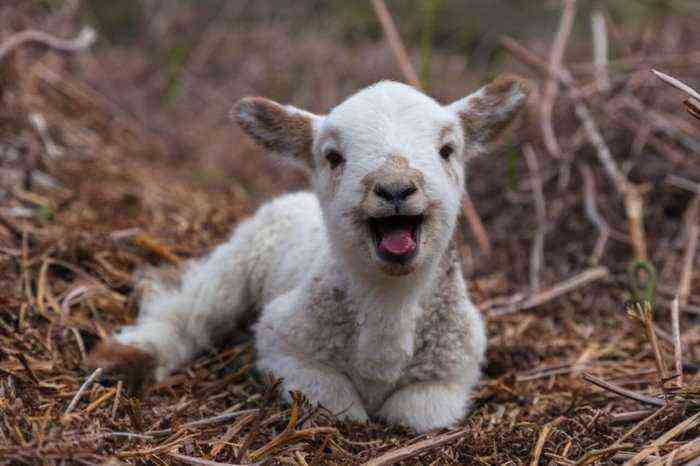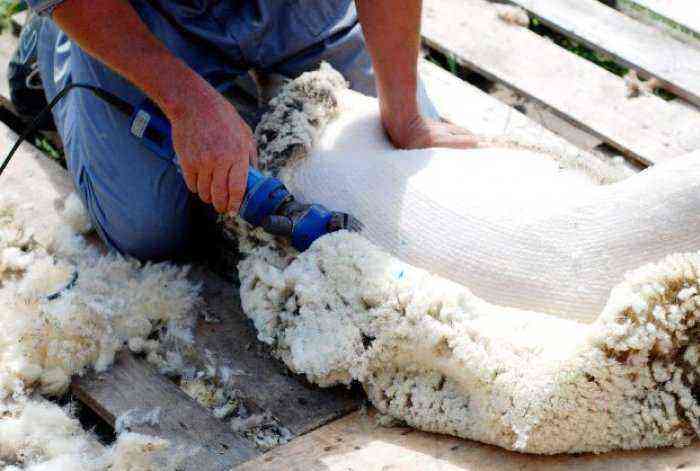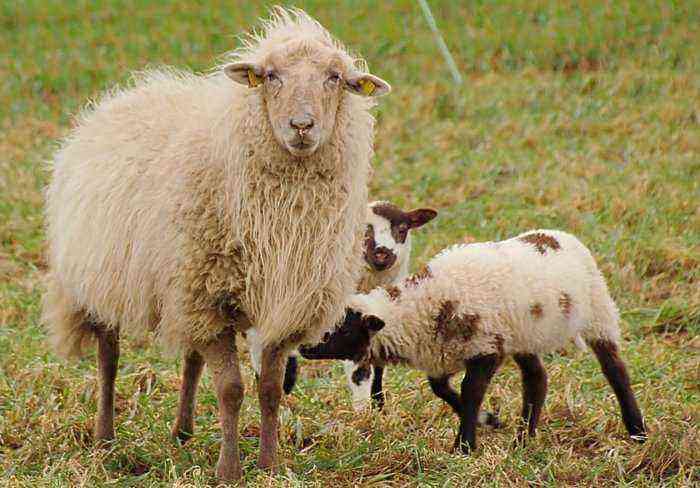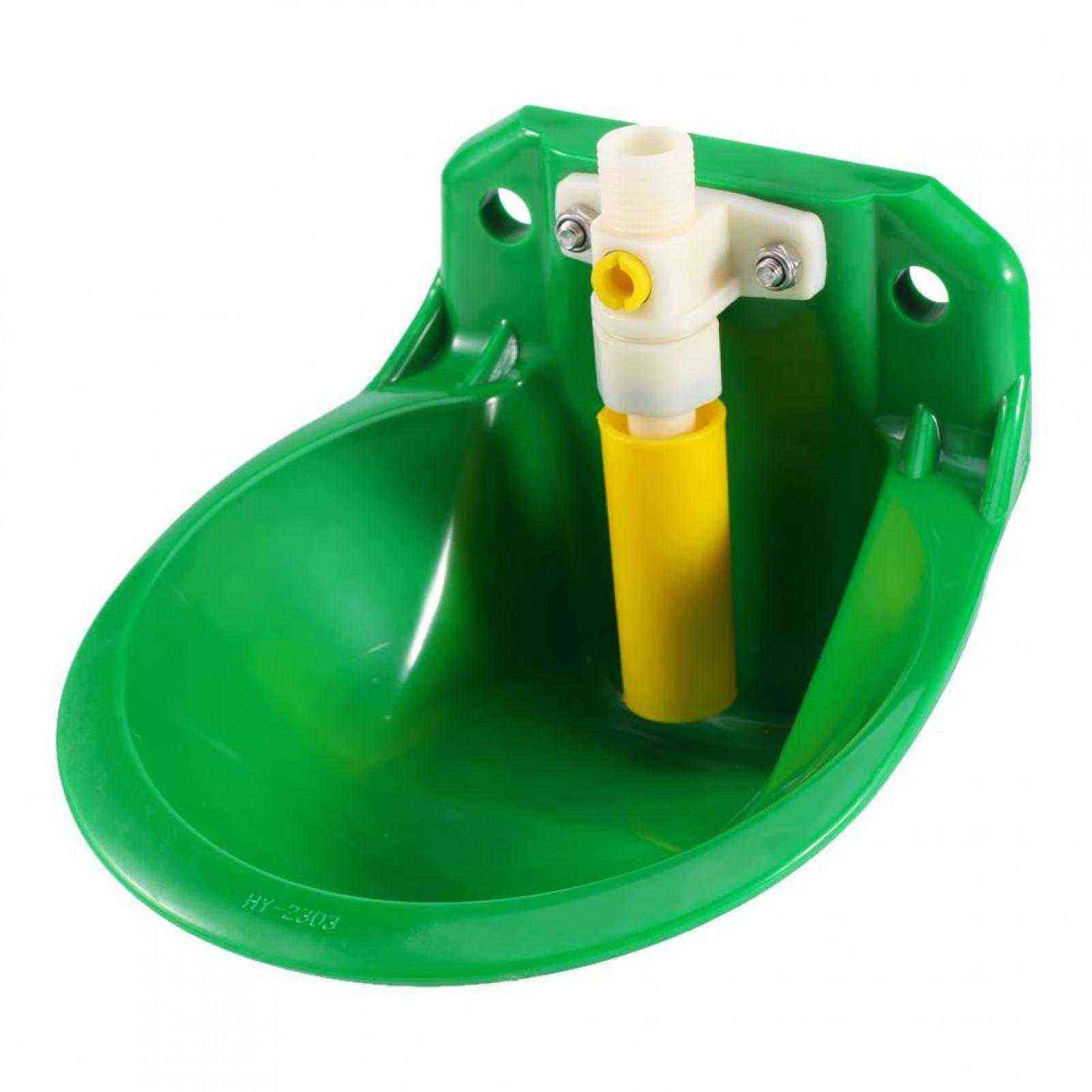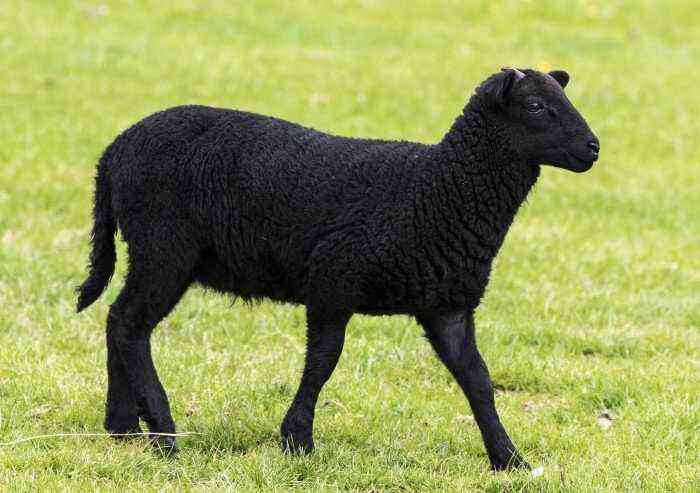Sheep of the Buubei breed are bred on the territory of Buryatia. They are valued by locals for their thick wool, tasty meat, almost devoid of a specific smell, and unpretentiousness. These animals differ from representatives of other breeds in thicker skin and snow-white dry fleece. The indisputable advantage of the breed is its adaptability to the sharply continental climate of Buryatia.
Buubei sheep on the grazing
History of origin
Buubei sheep originated from local sheep that lived on the territory of modern Buryatia. Sheep breeding in this area was widespread thousands of years ago. The Buryats bred sheep for meat, skins and wool. In the middle of the 20th century, the local breed almost disappeared from the face of the earth and was replaced by fine-fleeced sheep. However, the maintenance of the latter required large material and labor costs.
In the 90s of the 20th century, the Buryats decided to restore the number of native sheep. Several dozen individuals were found on the border with China, thanks to which it was possible to revive the breed, and it was later called buubei. The leading role in the preservation of the Buryat breed line belongs to B. B. Lkhasaranov.
Description of external characteristics
The Buubei sheep breed seems to have been specially created for the climatic conditions of Buryatia. All her outward signs speak of it. For example, its representatives almost do not sweat, so that their coat remains dry and looks neat, and the animals themselves do not freeze during frosts. Sheep and queens quickly accumulate fat and use it rationally in winter, when their diet is scarce.
Consider the main characteristics of the buubei exterior:
- the average height at the withers of a ram is 68–76 cm, the uterus is slightly smaller – 65–71 cm;
- the weight of a male reaches 60–70 kg, females – 45–50 kg;
- the head is proportional with a hook-nosed profile, it can be painted brown and almost black;
- the neck is rather dense, has an average length;
- lips thin or slightly fleshy;
- the body is elongated, massive;
- the chest is well developed, broad and deep;
- the line of the back is straight, the zone of the sacrum is well-fed, wide, slightly lowered;
- the limbs are set wide with well-developed joints and strong dark-colored hooves.
Attention! The sheepskin of buubei sheep is highly valued, as these animals are distinguished by dense skin, and the wool is 80% composed of fluff with a thickness of 12-16 microns. Due to the small amount of grease, the hairs remain clean.
Advantages of the breed
Buubei are popular in their homeland due to their good adaptation to the local climate. They spend the whole year on pastures. In summer, pets eat grass, they especially like wheatgrass, and in winter they willingly eat hay and other food. The main feature of the representatives of the breed line is a quick weight gain, and in the cold season, when the food supply becomes scarce, the slow consumption of reserves.
Important! Buubei have strong immunity. Even in severe winters, there is almost no loss of livestock in Buryatia.
Another advantage of the breed is the high quality of lamb. The meat of these animals is sweet and tender. According to sheep breeders, it does not have an unpleasant odor, and tastes somewhat like veal.
Buubei meat
Buubei queens are fertile. For one lambing, they produce from 1 to 3 lambs, which, due to the good milk production of females, quickly gain weight. Sheep have a well-developed maternal instinct, which is also an advantage of this breed.
Buubei sheep are profitable to breed for several reasons:
- they are content with pasture;
- they do not need warm rooms, they spend almost all year round on the pasture;
- the cost of keeping animals averages 1 thousand rubles a year per head;
- slaughter meat yield exceeds 52%;
- lamb has good taste and is in demand;
- animals rarely get sick and tolerate heat and cold very well.
Buubei breeding
Representatives of the aboriginal breed line mature early. Already at the age of one, young lambs can be allowed to mate, provided that their weight exceeds 36 kg. Lambing occurs 3 times in 2 years. Pregnant queens are fed with high-quality hay, root crops and vegetables. Their births are easy, without complications, and babies in most cases are born healthy and grow quickly.
Attention! The average daily weight gain of a lamb is 250-300 grams.
Ewes of at least grade 3 are allowed for breeding. Not only the general external characteristics and state of health of individuals are taken into account, but also indicators of the development of the udder and teats, as well as maternal qualities.
Buubei sheep deserve the attention of farmers. Being faced with the choice of breed for breeding, it is worth getting to know the Buryat line better. It is unpretentious and hardy, provides the owner with delicious tender meat and wool, and the cost of maintaining these sheep is low.

